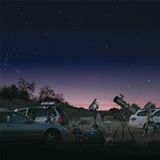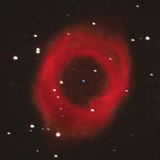
Nicknamed the "Comet Ferret" by France's Louis XV, astronomer Charles Messier (1730-1817) charted the positions of certain celestial objects that he felt could be mistaken for comets. In doing so he hoped to reduce "false alarms" in the hunt for new comets.
Today, his "catalog" of 110 nebulas, star clusters, and galaxies comprises many of the more stunning gems of the night sky—compelling subjects for viewing with amateur telescopes. Various Messier objects are available to view on any given night. Indeed, there is no better way to learn the night sky and develop your observing skills than to locate and study these luminaries.
In doing so, you will be treated to a rich diversity: 26 open star clusters and 29 globular clusters; 28 spiral galaxies, 11 elliptical galaxies, 1 irregular galaxy; 7 diffuse nebulas, 4 planetary nebulas; 3 asterisms; and 1 supernova remnant. They reside in 36 different constellations.
Some M objects, like M42 (the Orion Nebula) and M31 (the Andromeda Galaxy), are easy-to-find celestial guideposts. Others take more diligence to spot. Most are visible in binoculars or a small telescope. They are popular quarry at star parties; enthusiasts have even formed Messier "clubs." Messier "marathons" are held each spring, when it is possible to "bag" all of the Messier objects in a particular night (should one be so inclined)!
Interestingly, Messier's list includes many objects that couldn't possibly be mistaken for comets even with the naked eye. The loose, bright cluster known as the Pleiades (M45) is one example. It is possible that his initial motivation for documenting the positions of "comet-like" objects evolved to a desire to catalog a broader repertoire of nebulas and clusterings for their own sake. His findings were bolstered by the inclusion of some 27 objects cataloged by a fellow astronomer, Pierre Méchain.
The irony of Messier's enduring legacy is that his aim, at least initially, was to steer observers away from these now famous treasures. Instead, get thee to a telescope and seek them out!






















